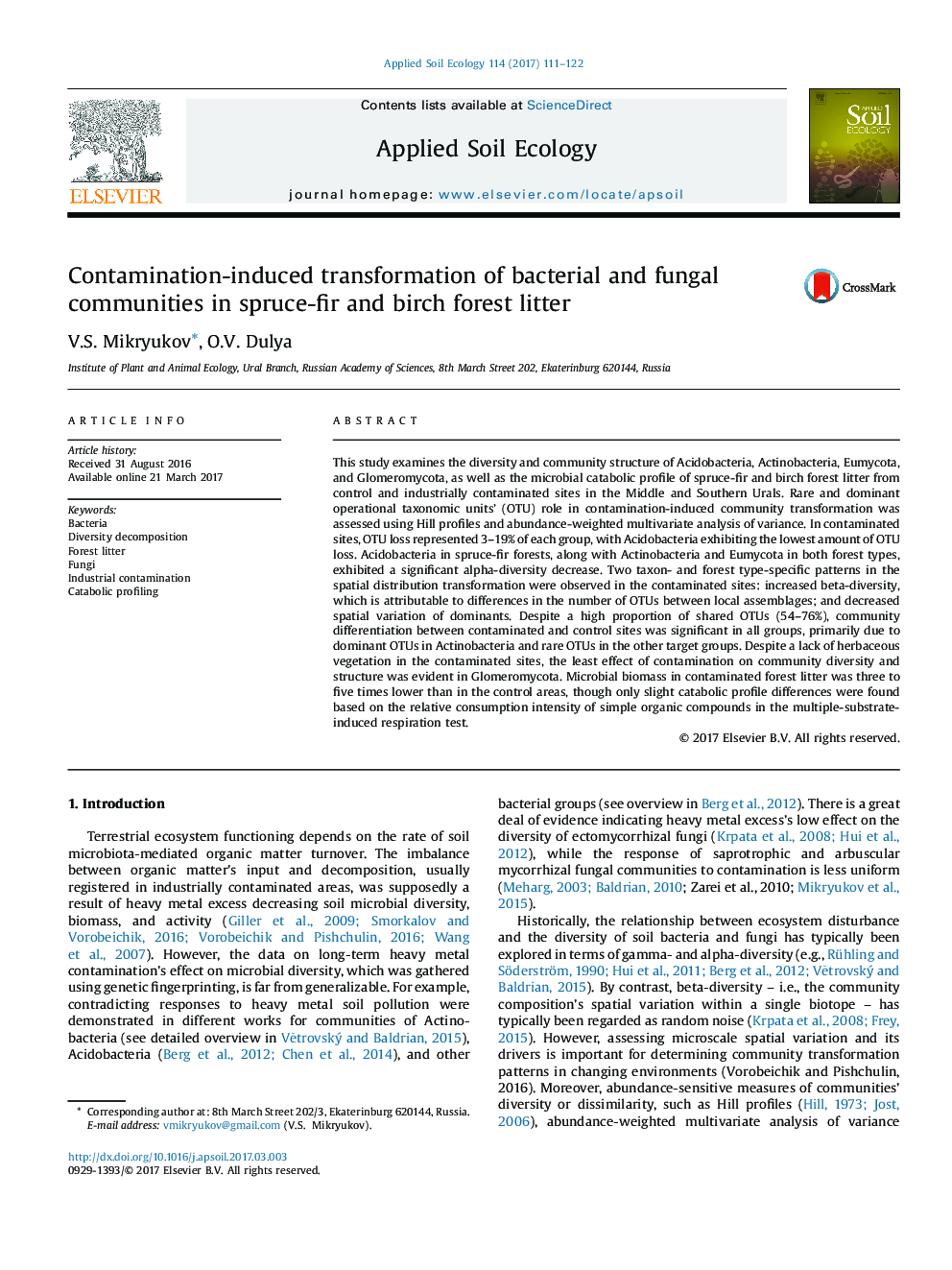| Article ID | Journal | Published Year | Pages | File Type |
|---|---|---|---|---|
| 5742719 | Applied Soil Ecology | 2017 | 12 Pages |
â¢Contamination alters microbial biomass and structure stronger than diversity.â¢Diversity profiles illustrate the mechanisms of microbial community transformation.â¢Glomeromycota show the least contamination-induced community transformation.â¢Contamination decreases the number of Eumycota dominants.â¢Contamination alters microbial catabolic profile primarily due to altered soil pH.
This study examines the diversity and community structure of Acidobacteria, Actinobacteria, Eumycota, and Glomeromycota, as well as the microbial catabolic profile of spruce-fir and birch forest litter from control and industrially contaminated sites in the Middle and Southern Urals. Rare and dominant operational taxonomic units' (OTU) role in contamination-induced community transformation was assessed using Hill profiles and abundance-weighted multivariate analysis of variance. In contaminated sites, OTU loss represented 3-19% of each group, with Acidobacteria exhibiting the lowest amount of OTU loss. Acidobacteria in spruce-fir forests, along with Actinobacteria and Eumycota in both forest types, exhibited a significant alpha-diversity decrease. Two taxon- and forest type-specific patterns in the spatial distribution transformation were observed in the contaminated sites: increased beta-diversity, which is attributable to differences in the number of OTUs between local assemblages; and decreased spatial variation of dominants. Despite a high proportion of shared OTUs (54-76%), community differentiation between contaminated and control sites was significant in all groups, primarily due to dominant OTUs in Actinobacteria and rare OTUs in the other target groups. Despite a lack of herbaceous vegetation in the contaminated sites, the least effect of contamination on community diversity and structure was evident in Glomeromycota. Microbial biomass in contaminated forest litter was three to five times lower than in the control areas, though only slight catabolic profile differences were found based on the relative consumption intensity of simple organic compounds in the multiple-substrate-induced respiration test.
